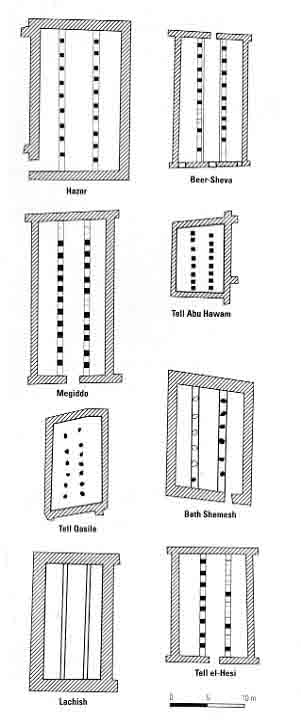Image Details

One design, many explanations. For 500 years—from the late 12th century B.C. (the period of the Judges) until the 7th century B.C. (the Divided Monarchy)—tripartite pillared buildings such as the ones shown here in floor plans appeared throughout ancient Israel and in some non-Israelite sites as well. The long, rectangular structures were divided into three narrow halls by a double row of pillars. Theories explaining the purpose of such buildings are nearly as numerous as the buildings.
While the proportion of length to width in these buildings is a fairly constant three-to-one, their actual lengths vary considerably from 35 feet at Tell Abu Hawam to 88 feet at Megiddo. The internal widths of the side rooms (not including the thickness of their walls) are more consistent, however: between 6 and 9 feet, with most measuring about 7.5 feet. The distance between pillars ranges from 2.5 feet to 5 feet.
